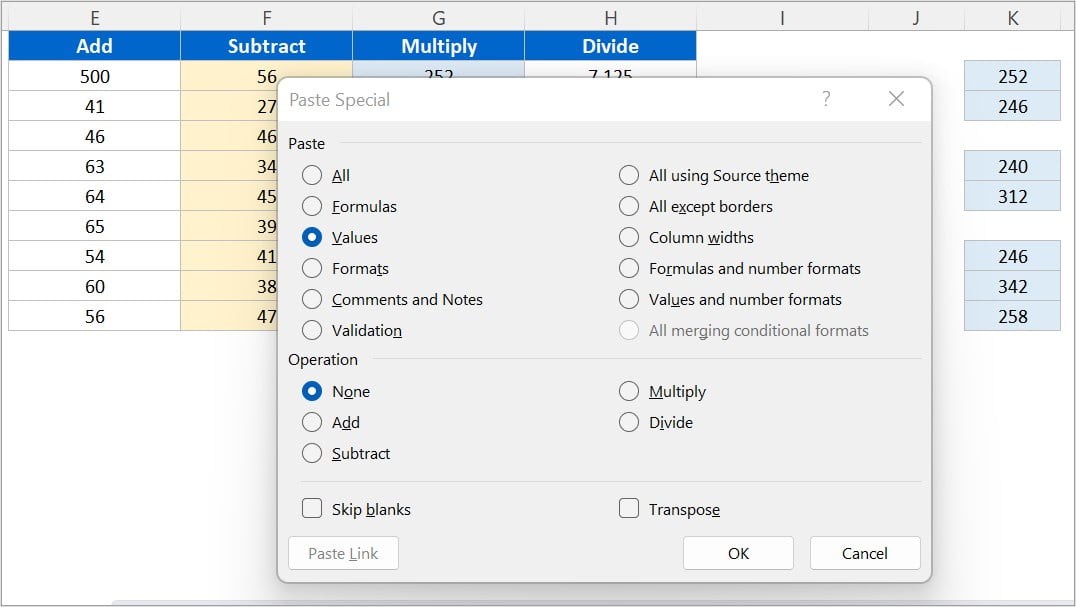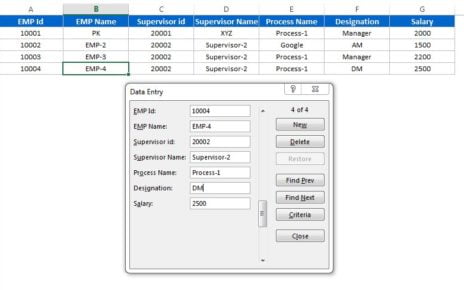Introduction to Paste Special in Microsoft Excel
Microsoft Excel offers a powerful feature called Paste Special, which enables users to paste data in various formats and apply a range of operations to the pasted data. This article will provide an in-depth explanation of the Paste Special options available in Excel and offer valuable tips and tricks for using them effectively.
Understanding Paste Options
Paste Special in Microsoft Excel
The Paste Options allow you to paste specific elements of the copied data, such as formulas, values, formats, and more. Let’s dive into each option:

- All: This option pastes everything, including values, formulas, formatting, comments, and data validation rules.
- Formulas: This pastes only the formulas from the copied cells, leaving the values and formatting behind.
- Values: This pastes only the values of the copied cells, disregarding formulas and formatting.
- Formats: This option pastes only the formatting from the copied cells, keeping the values and formulas intact.
- Comments and Notes: This pastes only comments and notes associated with the copied cells.
- Validation: This option pastes only data validation rules from the copied cells, leaving values, formulas, and formatting behind.
- All using Source theme: This pastes all cell content and formatting using the source theme, which is useful when copying data from a workbook with a different theme.
- All except borders: This pastes everything except cell borders, including values, formulas, formatting, comments, and data validation rules.
- Column widths: This option pastes only the column widths of the copied cells.
- Formulas and number formats: This pastes both formulas and number formats, excluding values and other formatting options.
- All merging conditional formats: This option pastes all content, merging the conditional formatting rules with any existing rules in the destination cells.
Paste Special in Microsoft Excel
Operation Options
Operation options allow you to perform mathematical operations on the copied data while pasting. The available options include:
- None: It will not apply any operation and will pates the data as-is.
- Add: The values in the copied cells are added to the values in the destination cells.
- Subtract: The values in the copied cells are subtracted from the values in the destination cells.
- Multiply: The values in the copied cells are multiplied by the values in the destination cells.
- Divide: The values in the destination cells are divided by the values in the copied cells.
Other Paste Special Options
Several other Paste Special options are available in Excel:
- Skip blanks: This option pastes the copied data, skipping any blank cells in the copied range.
- Transpose: This option transposes the rows and columns of the copied data, effectively changing the orientation of the pasted data.
- Paste Link: This option creates links to the copied cells in the destination cells, ensuring that any changes made to the source cells are reflected in the linked cells.
Tips and Tricks for Using Paste Special
Here are some tips and tricks to make the most of the Paste Special feature in Excel:
- Use keyboard shortcuts to access Paste Special quickly: Press Alt+E+S to open the Paste Special dialog box, or Ctrl + V followed by Ctrl to reveal the Paste Options menu.
- Copy and paste data between different Excel workbooks, maintaining consistent formatting and data structure with the ‘All using Source theme‘ option.
- Save time by using the operation options to quickly perform calculations without manually entering formulas.
- When copying large datasets, use ‘Skip blanks’ to avoid overwriting valuable data in the destination range.
- Utilize ‘Transpose’ to easily switch between horizontal and vertical data layouts.
Conclusion
Excel’s Paste Special feature offers a versatile set of options for pasting data in various formats, applying operations, and customizing the pasting process to suit your needs. By understanding and utilizing these options, you can significantly improve your productivity and efficiency in Excel.
Frequently Asked Questions
Q. What is the difference between pasting as ‘Values’ and ‘Formulas’?
A. Pasting as ‘Values’ will paste only the static values of the copied cells, while ‘Formulas’ will paste the formulas behind those values.
Q. Can I use Paste Special to paste data from other applications into Excel?
A. Yes, you can use Paste Special to paste data from compatible applications, such as Word or PowerPoint, while retaining formatting and other attributes.
Q. Is it possible to undo a Paste Special action?
A. Yes, you can undo a Paste Special action by pressing Ctrl + Z or using the ‘Undo’ button in the Excel toolbar.
Q. What is the purpose of the ‘Paste Link’ option?
A. The ‘Paste Link’ option creates links to the copied cells, ensuring that any changes made to the source cells are automatically reflected in the linked cells.
Q. Can I combine multiple Paste Special options in a single action?
A. Some combinations are possible, such as pasting ‘Formulas and number formats.’ However, for more complex combinations, you may need to perform multiple Paste Special actions.
Watch the step-by-step video tutorial:
Click here to download the practice file
Visit our YouTube channel to learn step-by-step video tutorials


